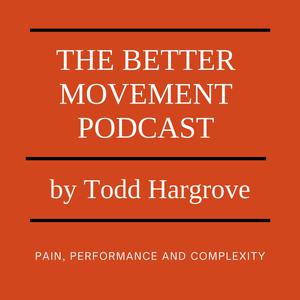
The Better Movement Podcast
Todd Hargrove
Science about pain, therapy, sports, evolution, play, and complexity. toddhargrove.substack.com
- 39 minutes 54 secondsGreg Lehman on Cognitive Functional Therapy
My guest for this podcast is Greg Lehman. Greg is a physical therapist, chiropractor, and researcher. Our main subject was a new study that found very positive results for Cognitive Functional Therapy (CFT). I thought Greg would be a good guy to ask about the strengths and weaknesses of the study, and how to interpret its meaning in light of the broader literature.
Greg is a popular writer and teacher whose main interest is reconciling pain science with biomechanics. Part of his approach involves looking at many different kinds of therapies that seem to work, and then asking: what do all these different methods have in common? It’s a good question that generates insight.
One of Greg’s strengths is a broad knowledge of the relevant research. Therefore, he always supports his arguments with specific citations, and he also has a good context to interpret the meaning of a news study. For example, if a new study comes out showing that therapy X works or doesn't work, he can probably think of other studies with different results.
Another great thing about Greg is that he is always willing to challenge his own biases. So if a study comes out validating his ideas, he will be the first one to stand up and point out its limitations.
In this podcast we talked about the strengths and weaknesses of the new CFT study, and how to put it in the context of the larger literature. We also talked about broader issues related to being aware of your own biases, cherry picking evidence, and using double standards to interpret studies.
Links
Greg Lehman’s website
Greg on Twitter
My previous podcast with Greg
Information on the study and Cognitive Functional Therapy
A previous post on Pain Reprocessing Therapy, which I compared to CFT
This is a public episode. If you’d like to discuss this with other subscribers or get access to bonus episodes, visit toddhargrove.substack.com/subscribe12 May 2023, 1:26 pm - 17 minutes 41 secondsMovement Lesson: Walking on the Sit Bones
Today’s podcast is a 15-minute movement lesson you can do in a chair. It's a novel way to get the pelvis and spine moving, and bring some awareness to how they coordinate to keep you comfortable and balanced. It involves walking the sit bones over the base of your chair as if they were feet. Maybe the best alternative to getting up and going for a walk.
This is a public episode. If you’d like to discuss this with other subscribers or get access to bonus episodes, visit toddhargrove.substack.com/subscribe25 April 2023, 6:06 pm - 59 minutes 52 secondsLeigh Egger on Coordination Training for Sport
Leigh Egger is a physiotherapist and trainer working as head of performance at Feyenoord Rotterdam, a Dutch professional soccer club.
I first became interested in Leigh’s work because he had extensive knowledge about applying the ideas of Frans Bosch to athletic training and injury prevention.
Bosch is the author of two fascinating books on movement (one of which I reviewed here.) His ideas are notoriously original, controversial, and somewhat confusing. Leigh has worked with Bosch closely and has significant experience putting his ideas to practical use.
I first met at Lee at a Bosch seminar in Los Angeles that he was helping to teach. Here’s a video of some highlights (with a brief cameo by yours truly.)
If you watch the video you will see some interesting and unusual exercises. In this podcast, Leigh provides some simple explanations of the logic behind these and other exercises as a way to improve athletic performance and prevent injury.
We talked about motor learning, passive versus active attractors, control of the pelvis and spine in single leg stance, the hip lock position, the proper use of the ankle during running, and many other topics.
Links
Speed Power Play, a consulting company run by Leigh and John Pryor
Speed Power Play on Instagram
Leigh’s Twitter page
This is a public episode. If you’d like to discuss this with other subscribers or get access to bonus episodes, visit toddhargrove.substack.com/subscribe8 December 2022, 8:53 pm - 1 hour 14 minutesTom Jesson on Sciatica
My guest for today’s podcast is Tom Jesson. Tom is a physiotherapist and author of a two excellent books related to nerve root pain: Sciatica: The Clinician’s Guide and Cauda Equina: The MSK Clinician’s Guide. He also writes a newsletter on nerve root pain here.
I highly recommend Tom’s writing because it is well-researched, easy to read, and respects the complexity of the subject matter.
In this interview we talked about about sciatica including: the difference between referred pain, radicular pain and radiculopathy; the anatomy of the nerve root; the different ways the nerve root can become irritated; disc herniations and whether size and type matters; how discs heal over time; and how to prevent and treat sciatica.
Highly recommended if you want to know more about this complex subject.
This is a public episode. If you’d like to discuss this with other subscribers or get access to bonus episodes, visit toddhargrove.substack.com/subscribe9 August 2022, 12:00 pm - 1 hour 3 minutesMark Miller on Predictive Processing
If you are interested in predictive processing, you should definitely listen to this podcast.
It’s an interview with Mark Miller, a philosopher and cognitive scientist who studied under John Vervaeke and did his PhD with Andy Clark.
I've read a bunch of Mark’s papers on using predictive processing to understand psychopathology, well-being, addiction, substance abuse, social media use, and playful behavior. These papers are filled with interesting insights about perception and action (along with some difficult technical materials that I won’t pretend to fully understand.)
In this interview, Mark did a great job of minimizing the technical stuff and maximizing the interesting insights, of which there were many. We talked about pain, play, meditation, therapy, horror movies, roller coasters, and many other things.
This was a super fun conversation and I highly recommend it.
To learn more about Mark and his work, you can visit his webpage here, find him on Twitter here, and check out his Contemplative Science Podcast here.
This is a public episode. If you’d like to discuss this with other subscribers or get access to bonus episodes, visit toddhargrove.substack.com/subscribe10 May 2022, 12:12 pm - 16 minutes 5 secondsMovement Lesson on Variable Sitting Posture
The podcast today features a 15-minute Feldenkrais-style movement lesson that you can do while sitting in a chair.
It's a progression from a couple other sitting lessons which you can find here and here. (You can do the lessons in any order by the way.)
Each lesson is about expanding you're sitting “vocabulary”, by which I mean all the different configurations of the pelvis, spine and ribs that can keep you in a balanced and comfortable position.
Let me know what you think in the comments.
This is a public episode. If you’d like to discuss this with other subscribers or get access to bonus episodes, visit toddhargrove.substack.com/subscribe31 March 2022, 2:53 pm - 58 minutes 42 secondsChristopher Johnson on Sport and Injury
Christopher Johnson is a physical therapist, performance coach, international speaker, published researcher, and elite triathlete.
I consider Chris to be a world-class source of information about the connection between movement and pain, especially in the context of endurance running. He knows all the research, has years of experience working with runners, and competes at the highest level.
Chris lives here in Seattle, so I’ve had many chances to get together with Chris and geek out about all things related to sports, movement and pain.
This podcast is a recorded version of one of those geek-out sessions. We decided to make it a joint interview where we both ask and answer questions. (As it turned out, I think I had a more questions for him.) In any event, it was an informal conversation that touched on a wide variety of topics including:
* Chris's background as a multi-sport athlete in skateboarding and tennis.
* differences in how we grew up playing many sports versus the modern environment where kids are forced to specialize.
* our personal experiences recovering from overuse and traumatic injuries.
* common injuries for runners, especially bone stress injuries and tendinopathies.
* raising kids to be healthy movers.
* how Chris deals with the mental stress of triathlons, including his absurd claim that 5Ks are harder than Iron Mans.
* our most recent projects and interests.
Links
Chris’ webpage
Chris’ new project collecting the best running drills: Top Shelf Resource Suite
Chris on YouTube
Chris on Facebook
Chris on Instagram
This is a public episode. If you’d like to discuss this with other subscribers or get access to bonus episodes, visit toddhargrove.substack.com/subscribe28 February 2022, 6:54 pm - 1 hour 8 minutesJohn Kiely on Robust Running
My guest on the podcast today is John Kiely. John is a senior lecturer at the University of Central Lancashire, Institute for Coaching and Performance.
I've been reading John’s research for several years now and his papers are always very interesting and fun. He's written on a wide variety of subjects like running, coordination, periodization and the science of smooth movement. You can find links to some of my favorite papers below.
What I really like about John’s writing is that he relates specific data points to big ideas, like complex systems, evolution, or stress/adaptation. And the perspective is very broad, so he makes interesting connections between seemingly unrelated topics. In his paper on smoothness, he refers to the Supreme Court free-speech debates about pornography. In his article about periodization, he writes about Henry Ford's theories of efficient car production in factories.
When John agreed to do this podcast, I was excited to talk about a whole bunch of topics, but we focused on one: how to be a coordinated and robust runner. In John's view, running performance and injury is far more about coordination then we might imagine. We talked about:
* the neural hierarchies governing coordination, ranging from the “smart” motor cortex to the “dumb” reflexes
* what neural “degeneracy” means and how it’s different from redundancy.
* the role of variability in performance and injury prevention
* how fatigue and aging affect variability and coordination
* why I strained my hamstring in my soccer game last week and what that has to do with coordination
* how to train fast versus slow reflexes
* the role of perturbation in training coordination
* John’s opinions on the work of Frans Bosch
We could have gone on for much longer, and I have many more questions, so I plan to ask John for more time in the near future.
Links
John’s research
John on Twitter
Some great papers by John that I recommend:
* Smoothness: an Unexplored Window into Coordinated Running Proficiency
* My post about the smoothness paper
* Periodization Theory: Confronting an Inconvenient Truth
* The Robust Running Ape: Unraveling the Deep Underpinnings of Coordinated Human Running Proficiency
This is a public episode. If you’d like to discuss this with other subscribers or get access to bonus episodes, visit toddhargrove.substack.com/subscribe21 January 2022, 1:36 pm - 18 minutes 55 secondsHow to Relax Your Shoulders While Sitting
For this week’s episode of the podcast I have a 15-minute movement lesson you can do while sitting in a chair. The goal is to release unnecessary tension in the shoulders and neck. Based on the Feldenkrais Method.
If you are enjoying these movement lessons, stay tuned for a coming announcement about a new series of online classes starting in January.
This is a public episode. If you’d like to discuss this with other subscribers or get access to bonus episodes, visit toddhargrove.substack.com/subscribe10 December 2021, 3:35 pm - 1 hour 18 minutesJoletta Belton on Chronic Pain From the Patient Perspective
Joletta Belton writes and speaks about her experience with chronic pain, so that clinicians and researchers can understand the patient perspective. I’ve heard her speak several times at pain conferences in San Diego and Oslo, and each time she had one of the most informative and engaging presentations.
Joletta is co-chair of IASP’s Global Alliance of Partners for Pain Advocacy, which integrates the patient perspective into the study, research, and treatment of pain. She is also the first Patient and Public Partnerships Editor at the Journal of Orthopaedic and Sports Physical Therapy.
In this podcast, Joletta tells her story about how she went from being an athletic firefighter to a disabled patient within just a year, after what seemed like a minor injury in her hip. She also explains how she eventually recovered, and how her sense of identity and meaning were profoundly impacted during her journey.
We talked about her injury and subsequent surgery, the pain of losing her job and sense of identity, her experience in the medical and worker’s comp system, and how some deep realizations helped with her healing process. We also talked about the value of stories and personal narrative to patients, how clinicians can help patients create those stories, and what researchers can learn from Joletta’s experience.
Highly recommended for clinicians, patients and anyone impacted by chronic pain.
Links
Joletta’s website and blog
Joletta on Twitter
The Global Alliance of Partners for Pain Advocacy
This is a public episode. If you’d like to discuss this with other subscribers or get access to bonus episodes, visit toddhargrove.substack.com/subscribe19 November 2021, 3:11 pm - 1 hour 9 minutesRob Gray on How We Learn to Move
Rob Gray is an expert on motor learning, especially as applied to sports.
I’ve been following his research for years, as well as his excellent Perception & Action Podcast, which is one of the best sources of online information about skill acquisition for sports.
Rob is an associate professor and undergraduate program chair in human systems engineering in the Polytechnic School at Arizona State University.
Just last week he released an excellent new book summarizing his ideas: How We Learn to Move: A Revolution in the Way We Coach & Practice Sports Skills. It’s a practical and highly readable summary of complex research. Highly recommended.
I had great time taking to Rob about his book and about all things motor learning, including variability, attractors, self-organization, Bernstein, and ecological psychology. We also discussed:
* why baseball players can help elbow problems by landing on sand
* how occlusion glasses can help soccer players keep their eyes up
* the problem with using cones to train soccer players
* my golf game
* why Albert Pujols struck out on three straight pitches facing an underhanded pitcher
For related topics, check out my podcast with Nick Winkleman.
Links
Rob’s new book
Rob on Twitter
Rob’s podcast
Rob’s research
This is a public episode. If you’d like to discuss this with other subscribers or get access to bonus episodes, visit toddhargrove.substack.com/subscribe9 November 2021, 1:40 pm - More Episodes? Get the App
Your feedback is valuable to us. Should you encounter any bugs, glitches, lack of functionality or other problems, please email us on [email protected] or join Moon.FM Telegram Group where you can talk directly to the dev team who are happy to answer any queries.
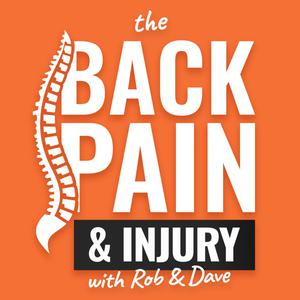 The Back Pain Podcast
The Back Pain Podcast
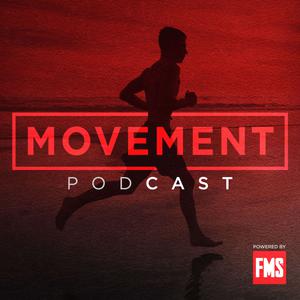 Movement Podcast
Movement Podcast
 Physio Explained by Physio Network
Physio Explained by Physio Network
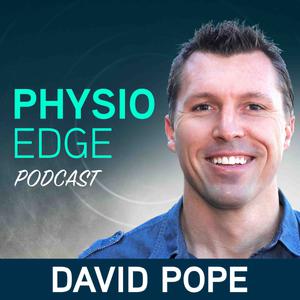 Physio Edge podcast
Physio Edge podcast
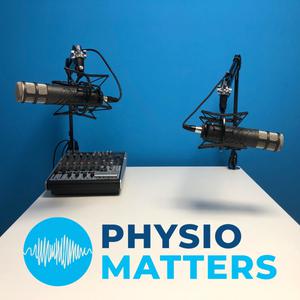 The Physio Matters Podcast
The Physio Matters Podcast
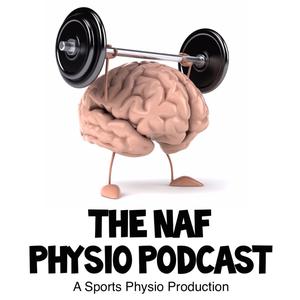 The NAF Physio Podcast
The NAF Physio Podcast